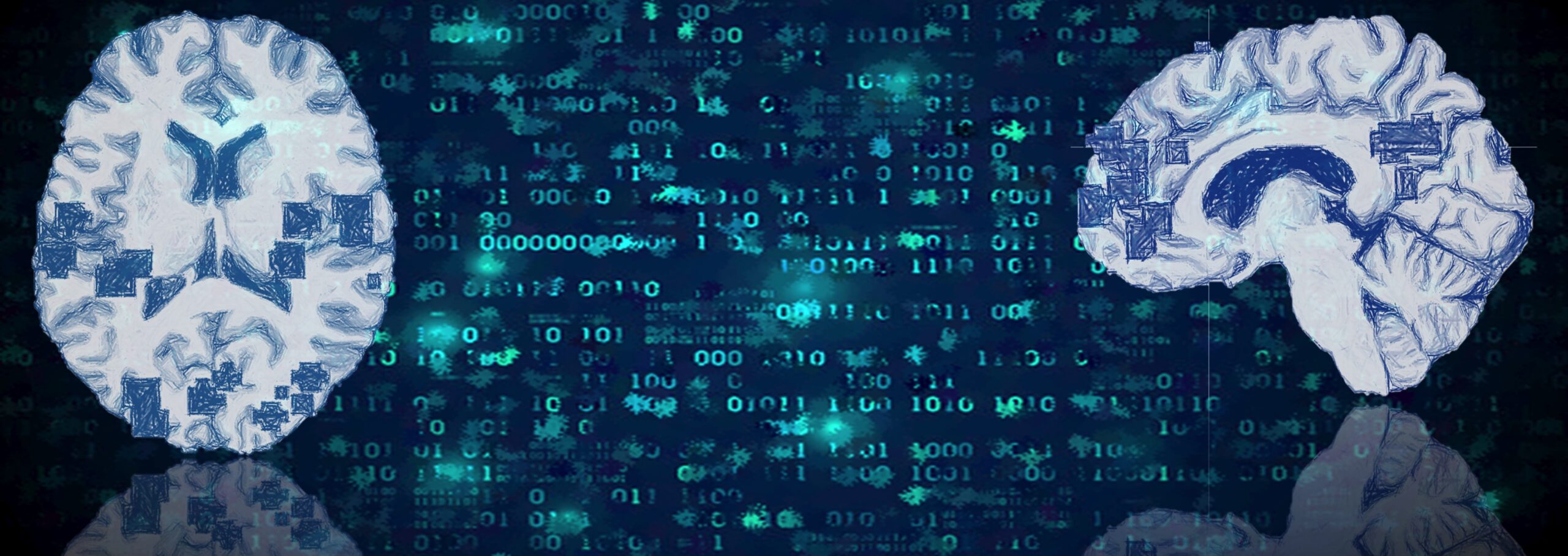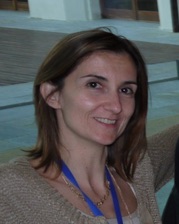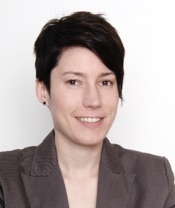
Day 7
Applications of Machine Learning in Neuroscience
Organized by Stefano Damiani
The day will be focused on the possible applications of machine learning to analyze functional Magnetic Resonance Imaging (fMRI) data. Standard fMRI measures will be discussed, the state-of-the-art explored and vanguard strategies of analyses discussed, especially for what concerns Autism Spectrum Disorders.
Introduction to standard fMRI measures
Functional MRI allows a wide array of approaches when analyzing the BOLD signal. Different measures can be used to explore both the intrinsic activity (Regional Homogeneity, Variability, Amplitude of Low Frequency Fluctuations, Power Law Exponent, Entropy) and the inter-regional one (Functional Connectivity). Each of these measures will be briefly introduced and its advantages and limits considered, as to choose a way of analysis over another implies major implications in the earliest phases of the study design. This lecture will provide an overview on how alterations in these neurobiological substrates may be related to specific clinical dimensions of psychiatric conditions, providing the fundamental concepts required to understand how machine learning can be applied to fMRI neuroimaging.
Speaker:

Stefano Damiani
Stefano Damiani Psychiatrist and PhD student in neuroscience and data science. His clinical background specifically focused on Autism Spectrum Disorders, Psychosis and Intellectual Disability. He works as consultant at Cascina Rossago, the first Italian farm community for adults with autism and cooperates with the Autism Lab of Pavia coordinated by Prof. Pierluigi Politi. His main research interests concern the mechanisms regulating the Self/World interaction, specifically sensory processing and interoception. In 2017 he attended a 12 months internship at the Ottawa Institute of Mental Health Research lead by Dr. Georg Northoff, focusing on translational neuroimaging and the relationship between phenomenology and neuroscience.
Affiliation: Università di Pavia, Department of Brain and Behavioral Sciences
Email: stefano.damiani01@ateneopv.ithttps://laboratorioautismo.wordpress.com/https://www.fondazionegenitoriautismo.it/cascinarossago.php
Neuroanatomical underpinnings in Autism Spectrum Disorders: current knowledge and future applications
Autism spectrum disorders (ASD) are a heterogeneous group of neurodevelopmental pathologies characterized by early onset abnormalities in social communication and interaction, as well as atypically restricted and repetitive behaviours and interests. One of the core domains that is particularly impaired and that constitutes a hallmark feature in ASD is language. Moreover, since first descriptions of autism by Kanner (1943) and Asperger (1944), a strong male bias in ASD prevalence has been consistently observed. Based on these assumptions, the first part of the talk will focus on neuroanatomical underpinning of two ASD crucial aspects: language and sex differences. The second part, instead, will cover translational applications of MRI in the ASD field, and specifically its possible role in the diagnostic process, as well as in the evaluation of outcomes after rehabilitative intervention.
Speaker:

Sara Calderoni
Sara Calderoni is Child and Adolescent Neuropsychiatrist at the IRCCS Stella Maris Foundation (Pisa) and Assistant Professor at the Department of Clinical and Experimental Medicine, University of Pisa. She received the degree in Medicine and Surgery from the University of Pisa (2002), the specialization in Child and Adolescent Neuropsychiatry (2007) and the Ph.D in Basic and Developmental Neuroscience (2011). In April 2018 she obtained the National Scientific Qualification as Associate Professor (06/G1 – General Pediatrics, Specialist and Child .Neuropsychiatry). SC is author or coauthor of 90 publications (67 papers in Journals with IF, 16 papers in Journals without IF, 5 book chapters, 2 book reviews) for a total of 995 citations and 18 H-index (Scopus). SC received three international awards (COST-ESSEA – Enhancing the Scientific Study of Early Autism- Early Career Award; IMFAR -International Meeting for Autism Research, Salt Lake City –USA- Travel Award; EU-AIMS -European Autism Interventions – A Multicentre Study for Developing New Medications- Travel Award) and was invited as a speaker at 39 national and international conferences. SC has been responsible for 5 research projects and participated as research assistant in 9 national and international projects. Since 2013 she has taught in various degree courses of the University of Pisa where she has supervised 30 students. She carries out clinical-assistance activities at the IRCCS Stella Maris Foundation (Pisa), in particular in the following areas: Autism Spectrum Disorders in developmental age, Eating Disorders in childhood and pre-adolescence/adolescence. The clinical activity was carried out in close connection with the research activity and was the source and object of publication.
Affiliation
Department of Developmental Neuroscience, IRCCS Fondazione Stella Maris, Pisa (IT) Department of Clinical and Experimental Medicine, University of Pisa, Pisa (IT)
Email: sara.calderoni@fsm.unipi.it
Machine learning analysis of neuroimaging data in Autism Spectrum Disorders
Machine learning methods allow setting up predictive models based of the information that the training algorithms learn from the data itself. In complex scenarios such as psychiatric conditions, where a specific neuroimaging-based biomarker has not been identified yet, whole-brain analysis approaches are usually preferable. A number of free available software packages allow morphometric feature extraction from brain MRI data. Subjects can thus be described in terms of, for example, volume and shape of cortical and subcortical structures. Machine learning algorithms can then be trained to attempt distinguishing individuals with Autism Spectrum Disorders from control subjects. Practical examples of supervised classification will be set up, developed and discussed, paying attention to the risk of introducing biases in the analysis, and to the need of implementing cross-validation strategies, especially when data samples with limited size are available.
Speaker:

Alessandra Retico
Alessandra Retico, PhD in Physics, is a senior researcher at the National Institute for Nuclear Physics (INFN), Pisa Division, Italy. Her main research interests are in applied Physics to medical imaging (RX, CT, MRI, PET-MR), image processing and analysis with state-of-art and innovative techniques, including machine-learning and deep-learning based methods. She coordinates the INFN research project Artificial Intelligence in Medicine (AIM), devoted to the implementation of innovative machine-learning based analysis techniques in the biomedical domain. She teaches in the course of Computer Methods for Experimental Physics and Data Analysis for Master and PhD students in Physics at University of Pisa. She has been collaborating with the MRI laboratory and the Psychiatry Division of the IRCCS Stella Maris (Pisa, Italy) since 2011, implementing data mining and machine learning analysis pipelines to highlight brain-related specific features of children with Autism Spectrum Disorders.
Affiliation: National Institute for Nuclear Physics (INFN), Pisa Division, Italy
E-mail: alessandra.retico@pi.infn.it
Applications of machine learning in autism spectrum disorder: Past and Future
Autism spectrum disorder (ASD) remains being diagnosed based on the behavioural level alone, and there are no established biomarkers that could assist diagnosis and predict clinical outcomes. Early attempts to distinguish individuals with ASD from neurotypical controls using machine learning approaches based on neuroimaging features were promising. However, subsequent studies in larger samples demonstrated that classification accuracies seem to be inversely correlated with sample sizes, most likely as a consequence of the large phenotypic heterogeneity associated with the condition. In this talk, we will review traditional and current applications of machine learning in ASD from case identification to stratification and subtyping. Moreover, we will focus on the important issue of feature selection as most conventionally used features have not been designed specifically with the purpose of characterising ASD. The design of novel neuroimaging measures that capture specific aspects of the neuropathology associated with ASD is therefore essential, and might significantly affect the sensitivity and specificity of our models.
Speaker:

Christine Ecker
Christine Ecker is Heisenberg Professor in the Department of Child & Adolescent Psychiatry, Psychosomatics and Psychotherapy at the University Hospital of the Goethe-University, Frankfurt am Main, and visiting professor at the Institute of Psychiatry, Psychology and Neuroscience (IoPPN) at King’s College, London. She holds an undergraduate degree in psychology obtained the University of Mannheim, Germany, and completed an MSc in neuroscience at the University of Oxford. She joined King’s College London in 2001, originally as a PhD student, and then as post-doctoral research fellow in the Department of Forensic and Neurodevelopmental Sciences. She became Lecturer in Neuroimaging at the Sackler Institute for Translational Neurodevelopment at King’s in 2010, with a main research focus on imaging methodologies and computational neuroanatomy in ASD. At the beginning of 2016, Dr. Ecker moved to the Goethe University in Frankfurt where she leads an independent research team focusing on translational neuroimaging applications in autism and related neurodevelopmental conditions.
Affiliation Department of Child & Adolescent Psychiatry, Psychosomatics and Psychotherapy at the University Hospital of the Goethe-University, Frankfurt am Main
Email: Christine.Ecker@kgu.de
Finding a needle in a haystack: The Challenges of Identifying Biomarkers of Psychiatric Disorders
Psychiatric disorders are all highly heterogeneous, both in terms of the clinical presentation and underlying biology. Despite considerable effort towards understanding psychiatric disorder using neuroimaging biomarkers, heterogeneity remains a barrier, partly because studies mostly employ case-control approaches, which assume that the clinical group is homogeneous. Here, I describe the normative modeling approach as an alternative approach to the case-control paradigm to parse heterogeneity in psychiatric disorder. Normative modeling shifts the focus away from group-level comparisons – which can detect consistent differences across groups of individuals (e.g., diagnoses or putative subtypes) – towards characterizing the degree of alteration in each individual, with reference to the expected pattern at the level of the individual patient. This allows us to detect and map neuroanatomical alterations at the level of the individual and has recently shown promise in understanding the biological variation of psychotic disorders.
Speaker:
